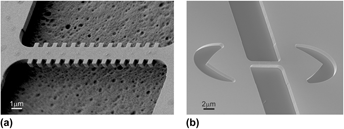Crossref Citations
This article has been cited by the following publications. This list is generated based on data provided by
Crossref.
Fedorov, S. A.
Engelsen, N. J.
Ghadimi, A. H.
Bereyhi, M. J.
Schilling, R.
Wilson, D. J.
and
Kippenberg, T. J.
2019.
Generalized dissipation dilution in strained mechanical resonators.
Physical Review B,
Vol. 99,
Issue. 5,
Armand Pilon, F. T.
Lyasota, A.
Niquet, Y.-M.
Reboud, V.
Calvo, V.
Pauc, N.
Widiez, J.
Bonzon, C.
Hartmann, J. M.
Chelnokov, A.
Faist, J.
and
Sigg, H.
2019.
Lasing in strained germanium microbridges.
Nature Communications,
Vol. 10,
Issue. 1,
Bonzon, C.
Reboud, V.
Sigg, H.
Widiez, J.
Calvo, V.
Chelnokov, A.
Faist, J.
Hartmann, J. M.
Lyasota, A.
Niquet, Y. M.
Pauc, N.
and
Pilon, F. T. Armand
2019.
Strained Germanium Lasing in the Mid-Infrared.
p.
1.
Pilon, F. T. Armand
Chelnokov, A.
Faist, J.
Sigg, H.
Lyasota, A.
Niquet, Y. M.
Reboud, V.
Calvo, V.
Pauc, N.
Widiez, J.
Bonzon, C.
and
Hartmann, J. M.
2019.
Strained Germanium Lasing in the Mid-Infrared.
p.
1.
Spejo, L. B.
Arrieta-Concha, J. L.
Puydinger dos Santos, M. V.
Barros, A. D.
Bourdelle, K. K.
Diniz, J. A.
and
Minamisawa, R. A.
2020.
Non-linear Raman shift-stress behavior in top-down fabricated highly strained silicon nanowires.
Journal of Applied Physics,
Vol. 128,
Issue. 4,
Armand Pilon, F. T.
Niquet, Y-M
Reboud, V.
Calvo, V.
Pauc, N.
Widiez, J.
Hartmann, J. M.
Chelnokov, A.
Faist, J.
and
Sigg, H.
2020.
Continuous wave lasing in strained germanium microbridge.
p.
1.
Reboud, V.
Buca, D.
Sigg, H.
Hartmann, J. M.
Ikonic, Z.
Pauc, N.
Calvo, V.
Rodriguez, P.
and
Chelnokov, A.
2021.
Silicon Photonics IV.
Vol. 139,
Issue. ,
p.
105.
Hoch, David
Yao, Xiong
and
Poot, Menno
2022.
Geometric Tuning of Stress in Predisplaced Silicon Nitride Resonators.
Nano Letters,
Vol. 22,
Issue. 10,
p.
4013.
Armand Pilon, F. T.
Niquet, Y-M.
Chretien, J.
Pauc, N.
Reboud, V.
Calvo, V.
Widiez, J.
Hartmann, J. M.
Chelnokov, A.
Faist, J.
and
Sigg, H.
2022.
Investigation of lasing in highly strained germanium at the crossover to direct band gap.
Physical Review Research,
Vol. 4,
Issue. 3,
Li, Bo-Yu
Qin, Zhen-Hui
Liang, Sheng-Nan
Chen, Hua-Yang
Yu, Si-Yuan
and
Chen, Yan-Feng
2024.
Strain engineering for a gigahertz mechanical resonator based on two-dimensional atomic-layer phononic crystals.
Physical Review B,
Vol. 110,
Issue. 21,
Lahaye, Loïc
Roisin, Nicolas
André, Nicolas
Flandre, Denis
and
Raskin, Jean-Pierre
2025.
Design, Fabrication, Modeling and Characterization of a Polyimide-Based Membrane for High Strain Studies in Microfabricated Devices.
IEEE Transactions on Materials for Electron Devices,
Vol. 2,
Issue. ,
p.
26.
